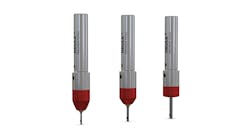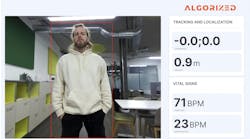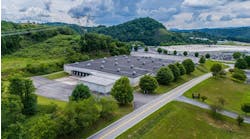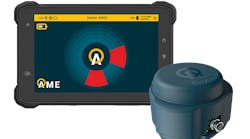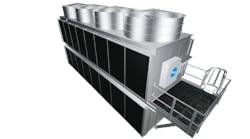This is the first of two stories focused on how Rockwell Automation is investing in the next waves of the industrial workforce. Follow the full story at IndustryWeek.
Travis Tolbert received call after call during his first months back in civilian life.
Tolbert had served 14 years in the United States Navy, the bulk of them as a chief electronics technician, working on Radar equipment and navigation equipment, testing and troubleshooting information systems, making certain that important and expensive installations worked as advertised. That experience afforded him plenty of opportunities when he returned home to the east side of Cleveland back in 2012. Everybody he had ever met, it seemed, wanted to hire him.
But Tolbert just wanted to work for himself for a little while.
Instead of jumping back into the workforce, he focused on athletic training, turning his sculpted shoulders and corded forearms into perfect advertisements to attract new clients. For a while, everything worked perfectly. Business boomed. Biceps bulged.
That old military drive kicked in, though, after a couple years. Tolbert itched for something a little more regimented — and a little more financially rewarding. He called back those friends who had offered jobs a few years earlier, but no one was hiring. He searched job boards for a while, but never found anything that could turn into a career. Then he finally stumbled across something that piqued his interest.
Rockwell Automation, a name he recognized from his Navy days, was launching a pilot program designed to train military veterans for the automation careers of today and the future. "It felt," Tolbert said, "like it was made just for me."
He applied. He waited a couple weeks. He was anxious for the first time in years. Then he received the kind of call he was finally ready for five years after leaving the Navy.
Come on over, he was told. We start in August.
From Idea to Ignition
The Academy for Advanced Manufacturing seems like a perfect program.
Established and operated by Rockwell Automation — with assistance from the Department of Defense and the staffing firm ManpowerGroup, which, like Rockwell, is a Fortune 500 company headquartered in Milwaukee — it aims to provide former military veterans with 12 weeks of industrial training and guarantees them placement in a position that could double or even triple their current salary.
The way Rockwell president and CEO Blake Moret sees it, the AAM serves three winning purposes: First, above all else, it provides returning veterans with meaningful careers that capitalize on the years of training already in their back pockets. Next, it provides manufacturers around the country — for now, all Rockwell customers — with some new employees prepared for the continued technological revolution. And finally, it solves some sliver of the skilled worker shortage. Call it a win-win-win.
"Workforce development is the existential threat to the future of manufacturing in this country and around the world," Moret said earlier this week in Houston at the company's 26th annual Automation Fair. "Having people comfortably interact with the technology that can enable that next level of productivity, I can't overstate the importance of it. And there's a huge need, a huge opportunity, to be able to take advantage of the skills that veterans can offer as they leave the service of their country and return to civilian life."
According to several estimates, more than 4 million veterans are expected to leave the service over a 17-year span ending in 2019, "and they'll be looking for jobs," Moret said. "Their future is unclear."
The AAM pilot stretched across 12 weeks, from early August to early November, with all training on site at Rockwell's facility in Mayfield Heights, Ohio, about 25 miles east of downtown Cleveland. The numbers were modest. Tolbert was one of 14 veterans who completed the program — "And not one missed one minute of training," said Mike Laskiewicz, VP and GM of Rockwell's power control business. "Not one was even late" — but every one of them has already received an offer or is in the final round of interviews.
Rapid expansion is in the works. Rockwell expects to add a program in Milwaukee next year and train at least 200 veterans. By 2019, the company expects to train about 1,000 veterans.
Rockwell is able to ramp up so quickly in part because of its Engineer in Training program, which is often referred to internally as EIT and has prepared more than 7,000 young engineers for industrial careers.
"When I ran the services business from 2007 to 2009, I thought it was really an unexplored gem within the things that we do," Moret said. The difference between the two programs is the background of the folks in training. The EIT program, Moret said, is normally filled with "mechanical engineers or electrical engineers, from schools we know pretty well, they're all just graduated, typically single and at the same point in their lives, and it's worked well."
The AAM, in contrast, is designed for "people with much more complex life experiences. They've been in combat, they're just out of school — and in fact, their highest level of education was often high school. That was a concern. But the passion from our people — many of whom are veterans themselves — they were going to make it work. So in less than a year, we've gone from a serious idea to getting manpower onboard and graduating 14 people."
Read the full story at IndustryWeek, and NED partner.


